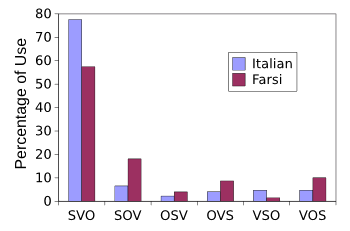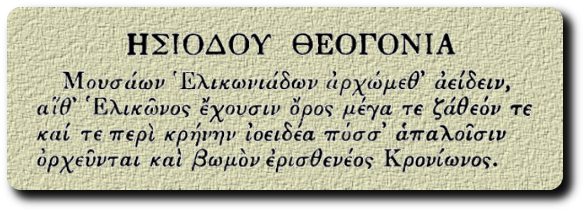A Natural Structure of Language?
November 5, 2015
Robotics and
expert systems rely on the idea that everything can be reduced to a
rote process, and once you catalog this process, you can take
humans out of the
system. I was once in a meeting at which several of my
colleague corporate scientists presented their
research to a
vice president. In those days,
The New York Times published a special
science section each week, and we scientists would joke that we could be sure of at least one question from management about a topic appearing there that week.
Expert systems had gotten much press at that time, since powerful
computers had become ubiquitous. When one of my colleagues, an
expert in
crystal growth, had finished his presentation, he was told by the vice president that he could be replaced by an expert system. While my colleague had enjoyed working at the corporation up to that point, shortly thereafter he left to start his own company.
The idea that a rote process is all a
student needed for mastery of a topic was a
plague that descended on me in
grammar school when we were forced to "
diagram"
sentences. Although we had many examples of good
grammar in our
reading, it was thought that we would learn better grammar by transferring sentences into
schematic outlines of their
subjects,
verbs,
objects,
prepositional phrases, etc.
We were not learning grammar; instead, we were spending our time learning the silly rules of making these diagrams.

My opinion of sentence diagrams.
(Created with Inkscape.)
This introduces us to the topic of this article, the
structure of
languages. Although
Americans are notoriously
monolingual, most
high school students take a few years of
foreign language instruction. While I was in high school,
Latin was still taught, and I studied Latin for four years. One difference between Latin and
English, and one that's hard for students to get accustomed to, is the order of words in a sentence.
English uses a subject-verb-object (SVO) order, but Latin and many other languages place the verb at the end with a subject-object-verb (SOV) order. While in English we would say, "Dev writes a book," the same in Latin would be "Dev book writes (Dev librum scribit)."
Some simple
math shows that there are six possible
permutations of subject (S), verb (V), and object (O) in a sentence. These are SVO, SOV, VSO, VOS, OVS, and OSV. About 86% of languages use either the SOV or SVO word order.[1]
Scientists from the
International School for Advanced Studies (SISSA,
Trieste, Italy), and two research centers in
Tehran, Iran, have conducted a study to determine whether the
human brain is "wired" for a particular word order.[2-3] They found that the SVO order is most favored.
One theory of why SVO might be preferred is that this order is more easily
remembered and
communicated. In a
noisy communication channel, separating subject and object in this way makes the expression of reversible events less subject to
distortion.[2]
The research team designed an
experiment with 28
Italian (19
females, 9
males,
mean age 23) and 28
Persian (10 females, 18 males, mean age 26)
adult native speaker participants. Italian is an SVO language, while
Farsi, the Persian language, is SOV. These participants were taught a simple
gesture language,[4] and they were asked to describe some simple
cartoon events using these gestures.
The results show that even SOV speakers have a preference for SVO thinking (see graph).

Results of word order experiment.
SVO word order seems to be hardwired into the human brain.
(Graphed from data in ref. 5 using Gnumeric.)[5)]
Says
Hanna Marno of SISSA,
"We hypothesized that if we made the participants' task easier by lightening the cognitive load of the linguistic task, we would observe a preference for the SVO form... Relieved of the job of having to invent their lexicon, the subjects were able to concentrate on spontaneous language expression and, as we expected, they chose the SVO order."[3]

As if word order isn't a sufficient complication, the conjugation of Ancient Greek verbs is notorious for having elements, such as the Aorist and Optative, not found in other languages. The opening of Hesiod's Theogony. (Hugh G. Evelyn-White, Trans., "Hesiod, the Homeric Hymns, and Homerica," William Heinemann (New York, 1920), pp. 79f., via Google Books.)[6)]
References:
- M. S. Dryer, D. Gil, and B. Comrie, "The order of subject, object and verb," in The World Atlas of Language Structures, M. Haspelmath, Ed., (Oxford: Oxford University Press, 2005), pp. 330–333.
- Hanna Marno, Alan Langus, Mahmoud Omidbeigi, Sina Asaadi, Shima Seyed-Allaei, and Marina Nespor, "A new perspective on word order preferences: the availability of a lexicon triggers the use of SVO word order," Front. Psychol., August 13, 2015, doi: 10.3389/fpsyg.2015.01183. A PDF file is available here.
- At the origin of language structure, SISSA, the International School for Advanced Studies, Press Release, August 27, 2015.
- Supplemetal video associated with ref. 2, 4.5 MB MOV file.
- Data associated with ref. 2, 43 kB XLS file.
- Hugh G. Evelyn-White, Trans., "Hesiod, the Homeric Hymns, and Homerica," William Heinemann (New York, 1920), pp. 639. From the Heliconian Muses let us begin to sing, who hold the great and holy mount of Helicon, and dance on soft feet about the deep blue spring and the altar of the almighty son of Cronos...
Permanent Link to this article
Linked Keywords: Robotics; expert system; rote learning; rote process; human; system; colleague; corporation; corporate; scientist; research; vice president; The New York Times; science; computer; expert; crystal growth; student; plague; grammar school; diagram; sentence; grammar; reading; schematic; outline; subject; verb; object; prepositional phrase; Inkscape; structure; language; >American; monolingualism; monolingual; high school student; foreign language; Latin; English language; mathematics; math; permutation; scientist; International School for Advanced Studies; Trieste, Italy; Tehran, Iran; human brain; memory; remember; communication; communicate; noisy-channel coding theorem; noisy communication channel; distortion; experiment; Italy; Italian; female; male; arithmetic mean; age; Persian; adult; first language; native speaker; Persian language; Farsi; nonverbal communication; gesture language; cartoon; hard coding; hardwired; Gnumeric; Hanna Marno; hypothesis; hypothesize; cognition; cognitive; linguistics; linguistic; invention; invent; lexicon; Ancient Greek verbs; Aorist; Optative; Hesiod; Theogony.